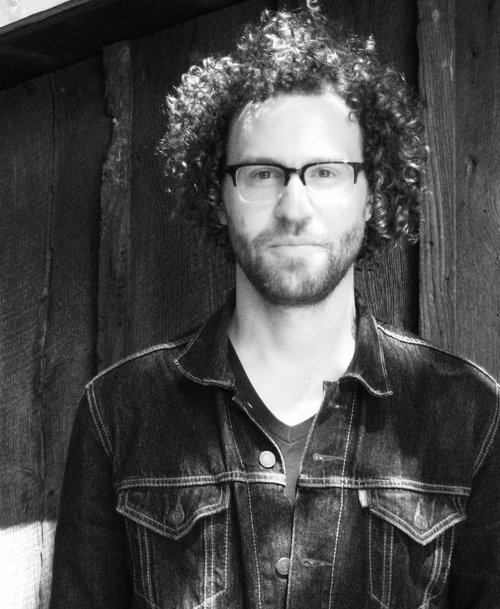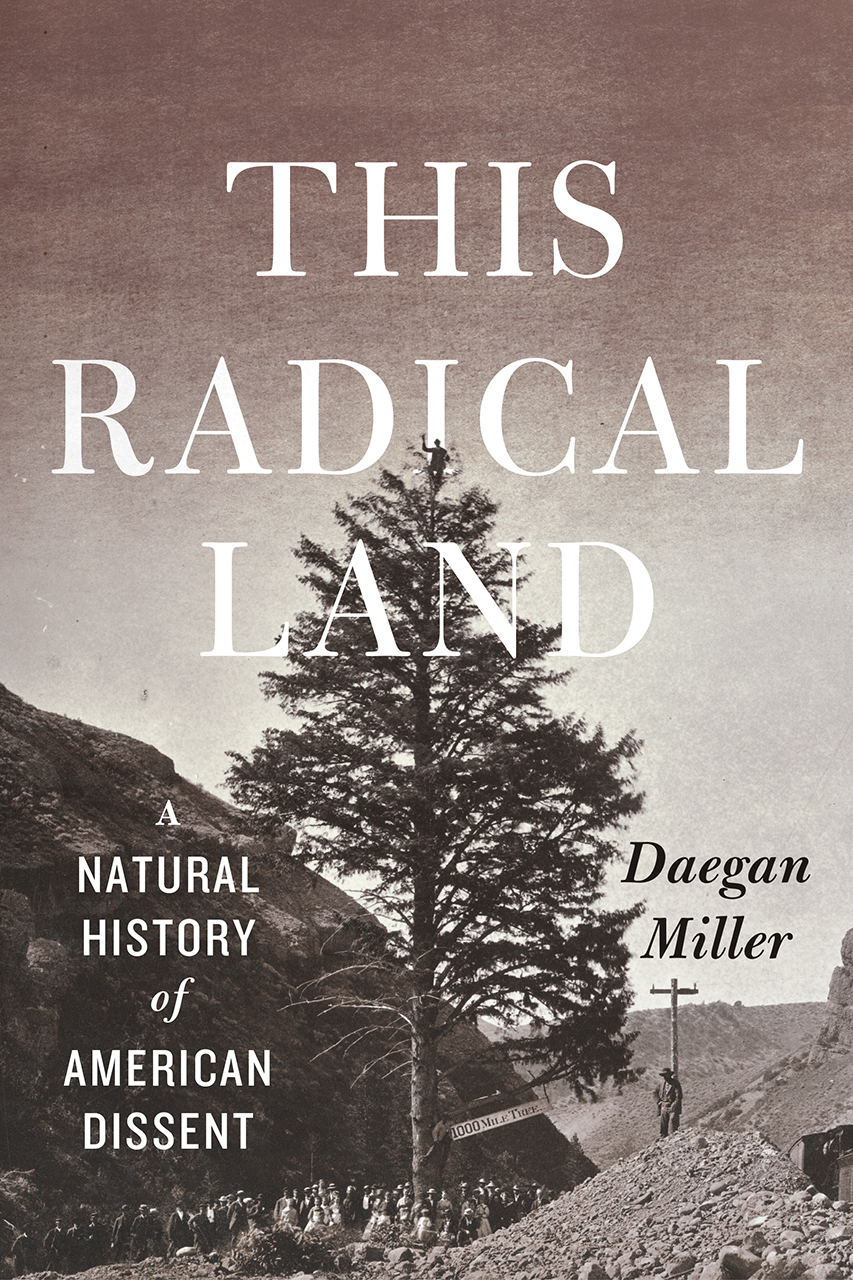
(Photo: Talia Miller)
In The Sixth Extinction, Elizabeth Kolbert notes that human activity—especially the burning of fossil fuels—has touched every last morsel of land on the planet. There’s no longer such a thing as unadulterated nature. Every space, no matter how seemingly isolated from human contact, is threatened by anthropocentric ecological degradation.
Kolbert’s premise reflects the unifying principle of environmental history: When thinking about the environment, we must not segregate humanity from the rest of nature, but should instead view humanity as an element of the natural world.
This frame of mind, true as it may be, has an unfortunate side effect. The relentless insistence, especially among academics, that untouched wilderness is a romantic myth discourages the mystical grandeur so many of us experience when encountering nature in its most impressive forms. It’s not the Grand Canyon we’re supposed to notice, but the hoard of tourists stomping through it; it’s not the lavish blueness of Lake Tahoe that should capture our attention, but the corrosion polluting its clarity. It’s as if, being dutifully informed environmentalists, we automatically have a doomsday responsibility to allow the inevitable logic of ecological degradation to prevail in every setting, no matter how beautiful it may be, thereby assuming the moral obligation to be gloomy.
Through interpretive brilliance and gorgeously crafted prose, Daegan Miller’s This Radical Land: A Natural History of Dissent rescues this sense of environmental awe from excessive skepticism. Miller fully accepts the idea that an honest notion of nature will necessarily include human activity. However, by presenting “wilderness” as negotiated space that makes possible “the mutually sustaining relationship between human society and nature”—rather than merely a once pristine place we have since trashed—he follows his own feeling of wonderment in the face of natural beauty to a conclusion that profoundly reshapes accepted environmental thought. It’s a move that, as Miller admits to me in an interview, goes against the grain of scholarly convention. It’s also makes his book one of the most elegant and insightful examples of environmental writing I’ve seen in many, many years.
Miller’s subjects are 19th-century visionaries who, when stopped in their tracks by a stunning landscape, see neither resources to be exploited nor a feral wilderness whose innocence should be preserved. Instead, these men and women conjure an “imaginatively inclusive wilderness” that offers a communal shelter from the self-isolation that is itself a result of capitalistic exploitation.
The quiet force of natural beauty, even when its empty silence evokes historical atrocities we too often prefer to ignore, motivates Miller’s subjects to cultivate ecological attitudes that, if not atoning for past sins, at least nurture communities that minimize the chances of such future atrocities. Utopians with socialist tendencies, these figures understand the human potential for justice and goodness to be something inseparable from nature. The juxtaposition of labor and nature as endemic to social relations, as Miller deftly shows, provides a much truer vision of ecological balance than you’d ever find in a masculine-obsessed brawler such as Theodore Roosevelt or even a less self-obsessed but equally windy environmentalist such as John Muir.
Miller writes, “we who now live in hot times have … inherited a long, though often overlooked legacy of social justice and environmental sensitivity.” His book—which consists of four interrelated essays—brings to light visions we have long ignored, and visions we cannot afford to ignore.

The opening essay in This Radical Land explores Henry David Thoreau‘s efforts to reclaim and re-invest in the Western lands that had long been treated as backdrops for consumption and exploitation. Thomas Jefferson’s Northwest Ordinance of 1785 prepped the American West with uniform grids that abstracted the landscape’s unique features into equal units that could be easily monetized. No matter what the local flora and fauna marking any specific patch of land, a square on the grid was a square on the grid. Miller explains that, in the heady aftermath of Jefferson’s diligent work, “it didn’t take long for the economic elite to grasp that Jefferson’s grid could be folded into a funnel to efficiently siphon off the wealth of the entire continent.” The siphoning echoed throughout the 19th century.
But Thoreau’s dissenting “countermodern map” of the Concord River provided an alternative. Drawn while working as a surveyor for the state, it contested the Northwest Ordinance’s insidious process of abstraction and commodification. Instead of blocks of neutralized land put up for sale, Thoreau’s map offered, in Miller’s phrasing, “a full, wild land living at once beyond and beneath the confined landscape of the town’s grasping improvers.” It was almost a “satirical anti-map” that was “alive with a riot of thousands of tiny notations,” all of them aiming “to picture Concord as situated in a landscape teeming with life and human usage.”

(Photo: The University of Chicago Press)
It was a map that, in identifying the Concord River as an entity living in place and time, and endowing it with precise features and patterns, presented it as an ecosystem within which humans might interact, work, play, and socialize without exploiting the land, or each other, for economic gain. With this map, Miller introduces the fertile notion that our ability to see and appreciate the unique life force of an environment—in this case Thoreau’s Concord River—shapes how might live in it. Grids delineated into plots for sale don’t allow such dreams.
Draw the right kind of map, and you might attract the right kind of people. Miller’s second essay turns to the Adirondacks (the place where he grew up and started hiking as a teenager) and explores “the radical potential of agrarianism” through a settlement known as Timbuctoo, a North Elba, New York, intentional community consisting of 3000 African-American settlers who, in 1846, were granted 40 acres of land apiece by the wealthy white abolitionist Gerrit Smith. These cohesively organized settlers explored what it meant to live in the spirit of Thoreau’s map.
In our conversation, Miller calls them “African-American pioneers who lived in tightly knit arrangements,” pursuing “an ecology of freedom” through labor in a natural environment. Indeed, one mission of this experiment was—as a utopian endeavor that integrated work, social relations, and nature—to address racism and the expansionist ideology of Manifest Destiny—that is, to fulfill the “potential for a radically better world.” (John Brown, the fiery abolitionist who would later lead a failed raid on Harper’s Ferry, lived in the commune for a spell of time.) This community, respectful of its resources, sought “places for husbandry, rather than a cut-and-get-out scene of pillage.” As they worked the land they modeled an ethic of sustainability that, as Miller notes, remind us that “perhaps not all important wilderness thinking comes from the brotherhood of lily-white wilderness thinkers and their modern-day, mainstream-environmentalist heirs.” (Spoiler alert, Miller is not a fan of contemporary environmentalism.)
As we discussed this section of his book, Miller asked, “who gets to make history? And what do we look for? Maybe we’re not looking in the right places.” Indeed, when was the last time anyone sought environmental wisdom from a group of black settlers? Too often so-called radical critiques of dominant ideologies come from “the ranks of privilege,” well-meaning types who, with easy access to the media, level rhetorical cannons and head to the Vineyard for the weekend. Miller’s overview of a commune of relatively unknown black farmers in upstate New York reveals how much more powerful dissent can be when coming from those who lean into the plow and do something truly radical: Live according to its stated imperatives. The fact that this experiment, as with so many others, eventually failed, is less important than the integrated environmental and social ethic—one rooted a anti-capitalistic political economy—it left for us discover and, one hopes, learn from. The upshot, as Miller sees it, was “a place of grace.”
The final two essays are similarly thematically entwined. In his third essay, Miller provides a tour-de-force analysis of the photography of A.J. Russell, a photographer best know for his images of the Civil War and the building of the Union Pacific Railroad. Whereas conventional assessments of Russell’s work conclude that his was a fairly anodyne take on major historical events (an objective chronicler and nothing more), Miller sees something altogether different.
He convincingly argues that Russell’s images, through his openness to the sublime and picaresque, capture the “tragedy of Progress” on the cusp of the Western frontier. Noting that Russell was, as with Thoreau and the Timbuctoo settlers, moved by the ineffability of nature, as well being an artist “on the very cutting edge of artistic photographic aesthetics,” Miller portrays him as a fierce critic of technologies—namely the railroad and mines—we’ve long assumed he passively endorsed. “A raw current of resistance,” Miller says about Russell’s work, aims to “unseat the simplistic notion that all land is destined solely for human use.” In the end, Russell’s photos “point to the role that technology and engineering and discipline played in the destruction of both human bodies and the land.”
The reverse of that familiar equation is what most intrigues Miller: a collective ecological endeavor based on values that enhance human bodies and the land—those inextricably linked phenomena. It is thus apt that the book’s last essay centers on another intentional community—the Kaweah Cooperative Colony—that settled Tulare County, California, in 1886 amid the region’s sacred sequoias. The Kaweah’s radicalism stemmed from their proposal for “an economic, social, and environmental system that could sustain human as well as nonhuman life.” Again, not leaving the land alone, but responsibly inhabiting it.
The Kaweah were not only Marxists, they were Marxists who logged—not the hulking sequoias but the pine, spruce, and fir surrounding them. In so doing, these savvy utopians reiterate Miller’s foundational claim that environmentalism is not about leaving the land alone and preserving it but rather “a method of interconnection” among humans and non-human residents living in it. Politically powerful railroad companies who wanted the land eventually foiled this “landscape of socialist cooperation,” but before it died, it embodied an “ultraradical sustainability” that foreshadowed “the green tint of social ecology.” Those sequoia groves “ultimately allowed the possibility for dreaming,” writes Miller, a reverie that the Kaweah almost turned into reality. It’s inspiring how much Miller convinces us to invest in that near miss.




